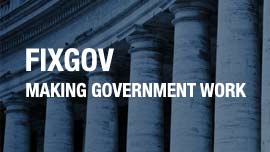As we write, on October 29, 2020, a voter somewhere in Texas cast his or her ballot to put turnout above the state’s 2016 numbers. We still have one day of early voting and Election Day itself left. This robust turnout has occurred in the midst of a global pandemic, in a state that’s been reluctant to make voting easier. While Governor Greg Abbott did extend the early voting period, we were one of just five states to require an excuse (other than COVID-19 fears) to vote by mail. We are one of 10 states that does not allow online voter registration. And Governor Abbott has aggressively sought to limit the drop-off locations for absentee ballots to one per county. Despite these difficulties, in 2020 Texas will have hundreds of thousands (perhaps millions?) of new voters. The number and the youth of these voters will transform Texas politics.
Will Texas turn blue? Your guess is as good as ours, but the fixation on the (very big) Electoral College implications misses an important long-term story. The story of Texas that we want to bring you is a sustained effort to make Texans more involved in politics, and a Republican Party that is showing some important cracks. These two factors are changing our state’s politics, whether or not they flip the state to the Democrats at the presidential level this year.
Texans have traditionally had to scroll down to the bottom of the list of voter turnout to find our state ranked among all the other states in national elections. In 2000, when Texas’s then-popular governor, George W. Bush, was running for president, fewer than 50 percent of eligible Texans showed up at the polls (only eight states had a lower percentage). In 2008, Texans broke the 50-percent threshold, but ranked a dismal 48th in turnout, finishing below even Mississippi. It is gratifying for us to see Texas at the top of the chart, even if it is just for a few days during the early-voting period.
What is particularly exciting for us is not just that turnout is up, but that turnout is up among our students and those in the youngest age group. Between 2014 and 2018, youth turnout rose from 8.2% to 25.8%. As of October 23 of this year, more than 700,000 young people in Texas (aged 18-29) had already voted, which is seven times the number of young people who had voted at that point in the 2016 election. Early youth turnout in Texas also dwarfs youth turnout in other states. The next-highest early voting state for young voters, Florida, had roughly 430,000 votes at the same point.
At the University of Texas at Austin our motto is “What starts here changes the world.” A play on that motto is helpful for understanding Texas’s current political atmosphere—“What Beto started in 2018 has changed Texas in 2020.” Beto O’Rourke, in his effort to defeat incumbent senator Ted Cruz, visited all 254 counties, raised $70 million in campaign contributions and came within 2.6 percentage points of winning. Beto galvanized Democratic voters like no candidate in quite some time. While he fell 215,000 votes short, the turnout helped Democrats flip two House seats, and pushed four other Democratic House candidates within five points (and an additional five candidates within 10 points). Compare this to 2016 when only one Republican House member won with a margin less than 10 percentage points (and that includes the two Republican incumbents who lost in 2018). Beto’s loss in 2018 did not depress Democrats nor diminish their enthusiasm. Rather, they were empowered at witnessing for the first time in decades (and for some voters, the first time in their lives) a Democrat having a real chance at winning a statewide race in the Lone Star State. That hope motivated them as they looked to 2020.
Democrats in this electoral cycle are better organized than they were in 2018, which is a good thing because no candidate on the ballot this cycle has Beto’s star power. The Democrats were able to recruit several good candidates to run in 2020, whereas in 2016, they didn’t even bother to field a candidate in eight U.S. House races. The Texas state House of Representatives is also attracting interest, as Democrats’ optimism has been politically contagious. In 2018, 14 state house seats were won by less than five percentage points, and for the first time in nearly two decades, Democrats have a chance at winning a majority—important for post-census redistricting. Having good candidates up and down the ballot means that a competitive race at the top of the ticket can fuel races below it, and competitive races down ballot can fuel turnout at the top of the ticket creating the virtuous cycle that we see playing out today.
We are not so bold as to predict a big upset in Texas on Tuesday evening, but we do expect that the trend that we saw in 2018 will carry forward to 2020 and, perhaps, beyond. Sen. John Cornyn, who will likely fare better in his race against Democratic challenger M.J. Hegar than President Trump will fare against Joe Biden in Texas, recently offered tepid criticisms of Trump. Those comments made national news because Senator Cornyn has been such a loyal Republican and a team player throughout his political career and during the Trump administration. Democrats may not win the big enchilada in 2020, but they very well may walk away with some nice breakfast tacos. At the very least, they got Kamala Harris to campaign in Texas the weekend before voting ends. That’s not nothing.
The Brookings Institution is committed to quality, independence, and impact.
We are supported by a diverse array of funders. In line with our values and policies, each Brookings publication represents the sole views of its author(s).








Commentary
It’s time to pay attention to Texas
October 30, 2020